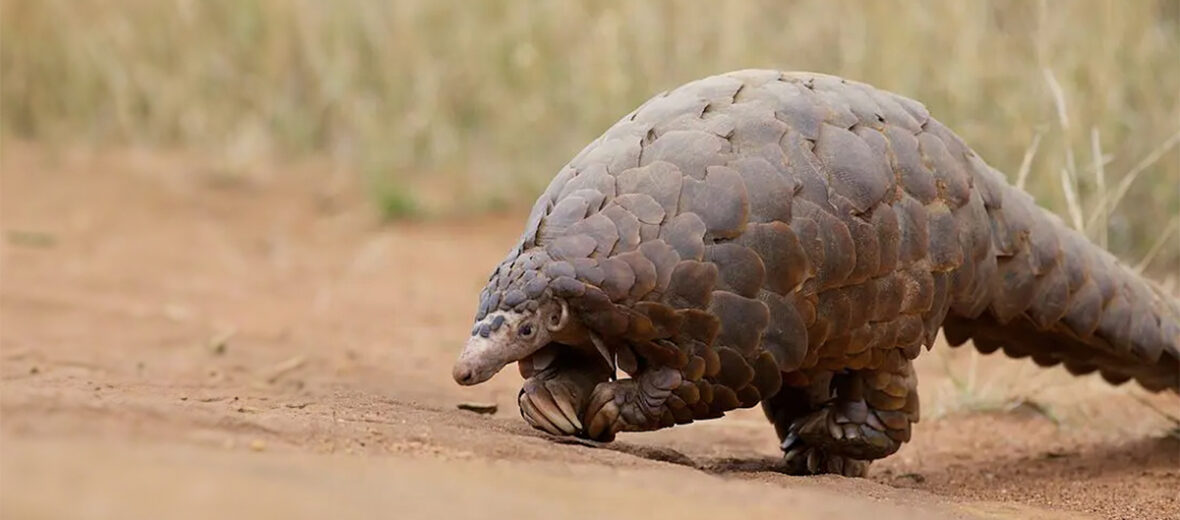
The giant pangolin, as its name suggests, is the largest of the pangolins. They can be found along the equator from West Africa over to Uganda. These pangolins prefer savannas, rainforests, and forest habitats, with ample ant and termite mounds, and with a steady supply of standing water. Sadly, these cool critters are faced with many threats, such as habitat loss and destruction at the hands of residential and commercial development, farming, ranching, oil and gas drilling, mining, quarrying, logging, roads, and railroads – which divide their habitat and can result in vehicle strike (being hit by vehicles); hunting; trapping; war; civil unrest; and climate change, which can result in habitat shifting alterations. The IUCN lists these creatures as Endangered, and their numbers are decreasing.
First the Stats…
Scientific name: Smutsia gigantea
Weight: Up to 88 lbs.
Length: Up to 54 inches
Lifespan: Up to 20 years
Now on to the Facts!
1.) These critters can be found at elevations of over 8,000 feet.
2.) Giant pangolins are nocturnal (active at night).
3.) They are solitary and only come together to mate.
4.) Their diet consists almost exclusively of ants and termites.
5.) To get at their meal, they utilize the powerful claws on their forelimbs, to tear apart ant and termite mounds to the point of partial collapse. They then use their long, sticky tongues to lap up their food.
But wait, there’s more on the giant pangolin!
6.) Gastroliths (small stones ingested for the sole purpose of aiding in digestion) are often swallowed.
7.) Females birth a single young, called a pangopup.
Did you know…?
Their tongue measures up to 28 inches long, and can extend from their mouth up to 12 inches!
8.) The pangopup weighs in at up to 18 ounces.
9.) During the up to 8 weeks that the pangopup rides on their mother’s back they have been documented excreting a yellowish liquid from their anal glands that smells like cabbage and decay. This is thought to deter predators from feasting on mom and/or the pangopup.
10.) Their only known natural predators are lions, leopards, and hyenas.
Now a Short Giant Pangolin Video!
Be sure to share & comment below! Also, check out the Critter Science YouTube channel. Videos added regularly!
Want to suggest a critter for me to write about? Let me know here.
Some source material acquired from: Wikipedia & IUCN
Photo credit: World Land Trust



